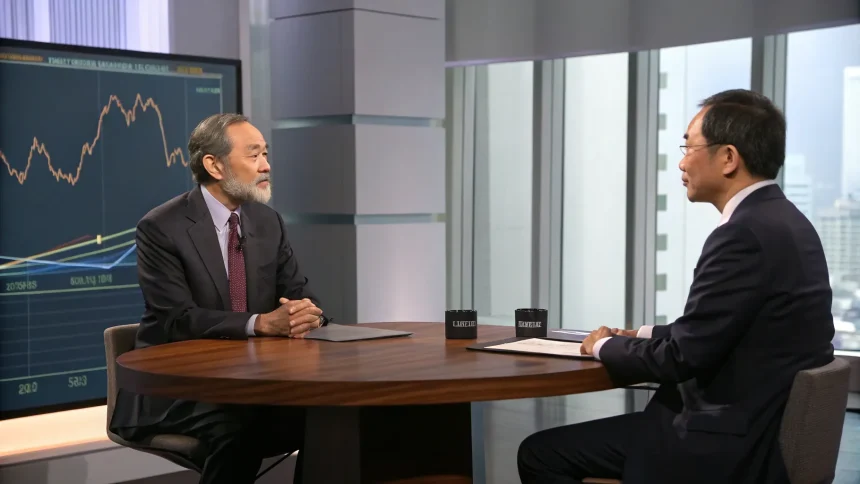Two veteran economists weighed the lasting economic effects of the 2017 tax law during a segment of Fox Business’s Making Money, offering a clear read on growth, hiring, and the federal budget. Piper Sandler senior economist Jake Oubina and FHN Financial chief economist Chris Low examined what the law changed, how the economy responded, and what comes next as parts of the policy near expiration.
What changed: rates, deductions, and investment incentives
The Tax Cuts and Jobs Act lowered the corporate income tax rate from 35% to 21% and introduced a one-time tax on overseas profits. It cut individual rates and nearly doubled the standard deduction, while capping state and local tax (SALT) write-offs at $10,000. Many individual provisions are set to sunset after 2025, which keeps businesses and households watching for clarity.
Oubina and Low highlighted that temporary expensing for equipment, a key business incentive, encouraged some firms to pull investment forward in 2018 and 2019. The panel also noted the split effects on households: middle earners saw modest tax relief, while high-tax-state filers faced larger bills due to the SALT cap.
Growth bump, then a reversion
U.S. real GDP growth accelerated in 2018, helped by stronger consumer spending and a pickup in business investment. Unemployment fell to 3.5% by late 2019, a half-century low. Wage gains improved but remained uneven, with stronger increases for lower-wage workers as the labor market tightened.
By 2019, investment momentum cooled as global trade tensions rose and the initial boost from the tax law faded. Low pointed out that the pattern matched textbook expectations: a short-term lift from lower tax rates and expensing, followed by a move back toward trend growth.
Deficits and debt: the budget trade-off
The law was passed with the promise of faster growth, but it also reduced revenue. Nonpartisan estimates from the Joint Committee on Taxation projected roughly $1 trillion to $1.5 trillion in net deficit increases over 10 years, even after accounting for extra growth. That gap grew further as Congress later enacted additional spending and pandemic relief.
Oubina emphasized that the fiscal math matters for interest rates. Larger deficits add to Treasury supply, while the Federal Reserve fights inflation with higher policy rates. The mix can push borrowing costs higher for businesses and households.
Winners, losers, and the SALT debate
The panel noted uneven effects across regions and industries. Manufacturers and capital-intensive firms benefited from expensing and the lower corporate rate. High-income filers in states with large property and income taxes faced a bigger hit from the SALT cap.
- Corporate tax cuts were permanent, aiding long-term planning.
- Most individual cuts expire after 2025, creating uncertainty for family budgets.
- SALT limits reshaped housing and migration choices in high-tax states.
Investment, productivity, and pay
Did the tax law lift productivity and wages in a lasting way? The evidence is mixed. Business investment improved in 2018 but struggled to break out over multiple years. Productivity posted brief gains, then stalled, interrupted by the pandemic and supply shocks.
Low said firms used savings for a mix of share buybacks, debt reduction, and selective capital projects. Oubina added that durable gains in productivity tend to require sustained investment in technology, training, and infrastructure, not just lower taxes.
What happens after 2025
With individual provisions expiring at the end of 2025, households face a possible tax increase unless Congress acts. Economists see three broad paths: extend the current rules, allow them to lapse, or strike a partial compromise that keeps some relief while raising revenue elsewhere.
The choice will affect inflation, the deficit, and growth. Extending current cuts would support spending but add to the debt. Letting them lapse would raise revenue but could slow consumption in 2026. Markets will be sensitive to the timing and clarity of any deal.
Key takeaways from the economists
Oubina and Low agreed that the 2017 law delivered a near-term boost and a lasting change to corporate planning, while shifting more of the budget strain to the federal balance sheet. Their discussion suggests three points to watch:
- How Congress resolves the 2025 expirations and the SALT cap.
- Whether business investment accelerates beyond replacement spending.
- How deficits interact with higher interest rates and the Fed’s inflation fight.
The bottom line: the tax law cut rates and helped growth in the short run, but it also widened deficits and set up a 2025 policy cliff. As Washington debates the next step, families and firms should plan for multiple scenarios, keep an eye on interest rates, and watch for early signals on investment and hiring.







